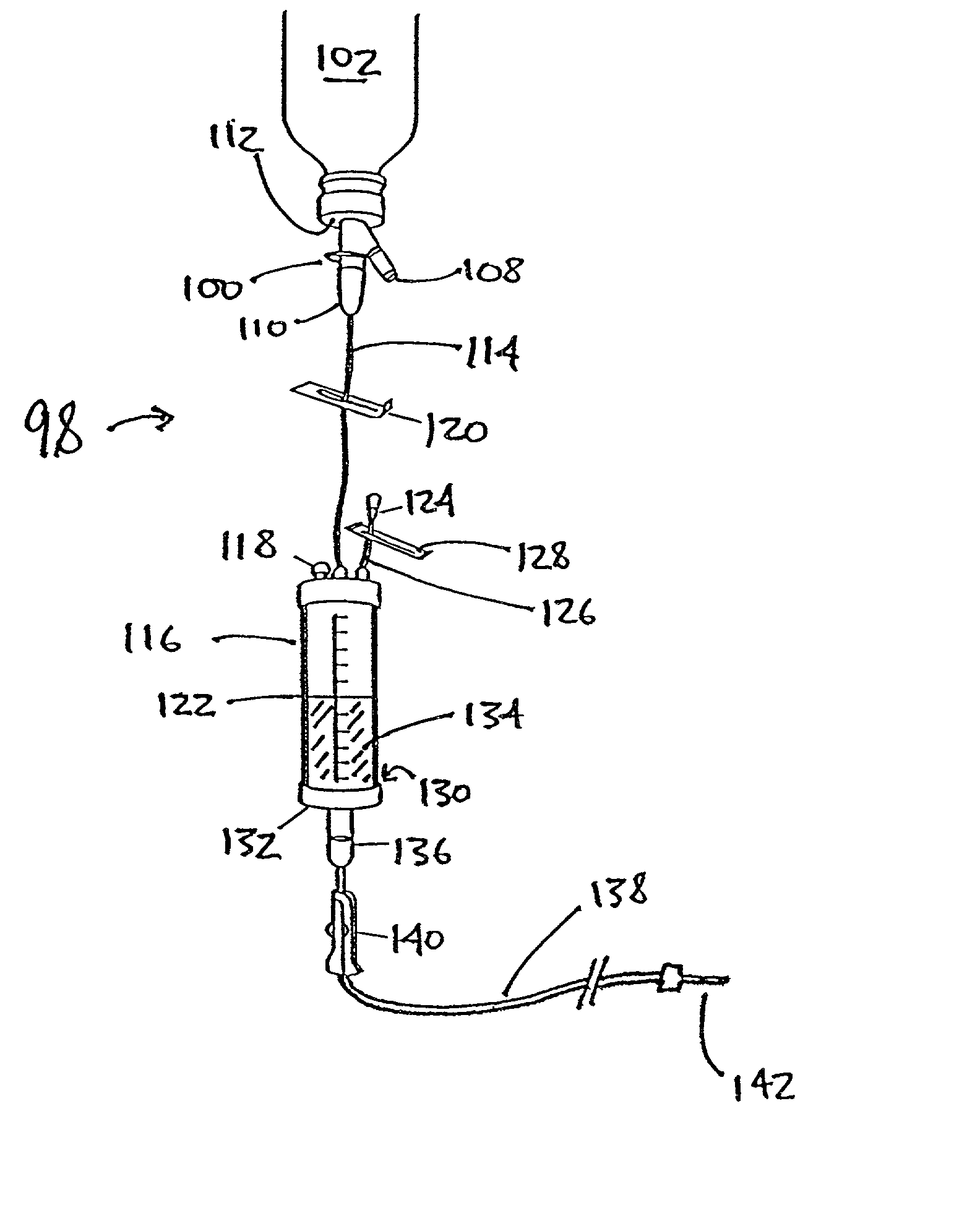Method of making self-sealing materials
a self-sealing material and liquid-permeable technology, applied in the direction of instruments, other chemical processes, separation processes, etc., can solve the problems of cellulose powder leaching of metal or other ions, self-sealing materials can easily contaminate liquids, and the effect of too slow to be of much use in other applications
- Summary
- Abstract
- Description
- Claims
- Application Information
AI Technical Summary
Benefits of technology
Problems solved by technology
Method used
Image
Examples
Embodiment Construction
[0038] This invention relates to materials that are permeable to gases or non-aqueous liquids but which become less permeable when exposed to water. These materials, referred to herein as "self-sealing" materials, comprise a hydrogel adhered to pore walls of a porous substrate. A hydrogel is a material that swells in water and retains a significant fraction of 15 water without dissolving in water. Hydrogels are made of at least one hydrophilic polymer, referred to herein as a "hydrogel material."
[0039] Self-sealing materials of this invention can exhibit a number of desirable properties, including short response times, little or no contamination of aqueous solutions with which they come in contact, the ability to withstand high back-pressures, and biocompatibility. Preferred self-sealing materials of the invention can withstand a water back-pressure of greater than about 7 psi, more preferably greater than about 8 psi, and most preferably greater than about 8.5 psi. The air flow rat...
PUM
| Property | Measurement | Unit |
|---|---|---|
| back-pressures | aaaaa | aaaaa |
| pressure | aaaaa | aaaaa |
| pressure | aaaaa | aaaaa |
Abstract
Description
Claims
Application Information
 Login to View More
Login to View More - R&D
- Intellectual Property
- Life Sciences
- Materials
- Tech Scout
- Unparalleled Data Quality
- Higher Quality Content
- 60% Fewer Hallucinations
Browse by: Latest US Patents, China's latest patents, Technical Efficacy Thesaurus, Application Domain, Technology Topic, Popular Technical Reports.
© 2025 PatSnap. All rights reserved.Legal|Privacy policy|Modern Slavery Act Transparency Statement|Sitemap|About US| Contact US: help@patsnap.com



